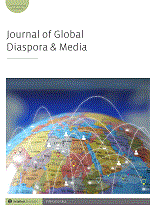
Full text loading...

Venezuela’s displacement crisis has received extensive media coverage around the world. COVID-19 has exacerbated dramatic stories of border closures and increased prejudice against new arrivals. This article analyses videos of six young Venezuelan migrants who created YouTube channels to document their journey over four years (2017–21). A multimodal content analysis (MCA) captured themes and portraits that emerged from these videos. While these stories should not represent the full spectrum of Venezuelan self-mediatized migration, neither is YouTube free from commercial influences, these videos provide various reasons for their moving out, chapters of their integration into the new reality and plans for the post-settlement life. Most content makes sound evidence for understanding self-mediatized migration as interspersed with the capitalist underpinnings of social media platforms while casting genuine aspirations of a better life that contest the current stereotypical coverage.

Article metrics loading...

Full text loading...
References


Data & Media loading...

Publication Date:
https://doi.org/10.1386/gdm_00031_1 Published content will be available immediately after check-out or when it is released in case of a pre-order. Please make sure to be logged in to see all available purchase options.